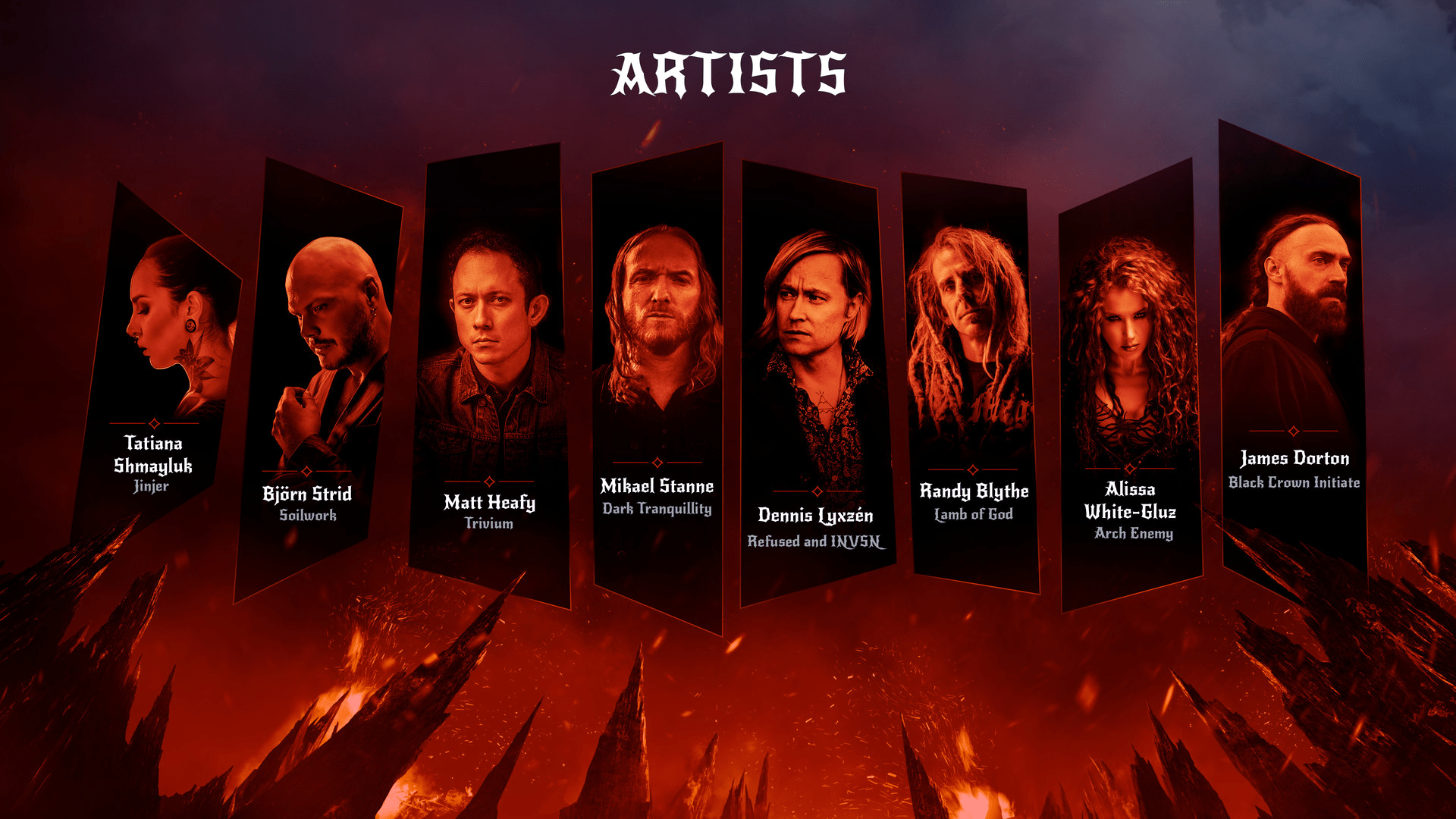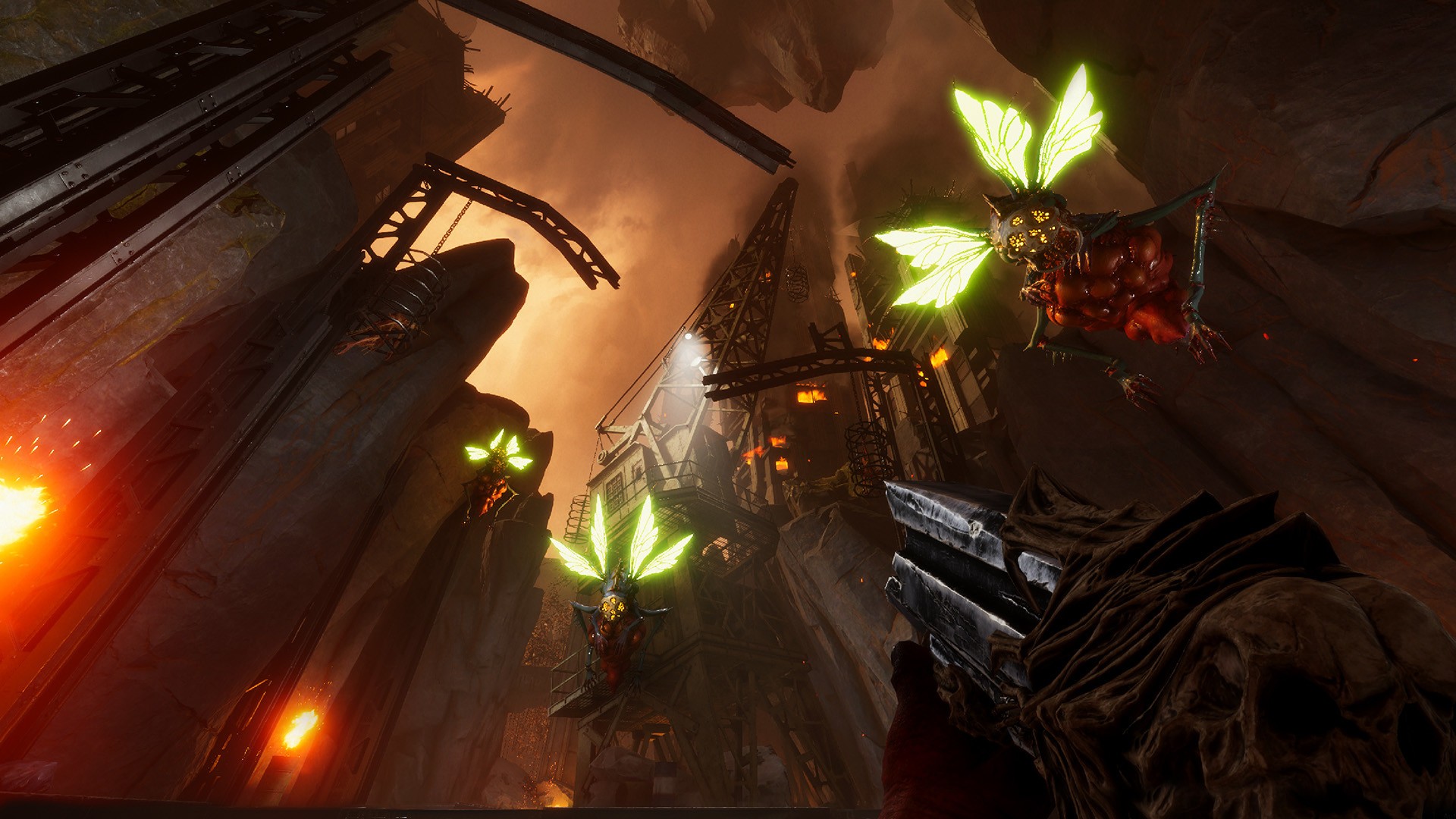Music, emotion, and video games combine for a hell of a time
At The Game Awards in December, publisher Funcom unveiled the trailer for its upcoming release, Metal: Hellsinger. The game, set in the depths of a fiery inferno, tasks players with unleashing vengeance on a horde of demonic foes. Loud, bloody and adrenaline-driven, the title has all the features of a typical first-person shooter, but what sets it apart is an additional aim – players don’t just slay, they have to “slay to the beat.”
The game is being developed by The Outsiders, a Stockholm-based studio run by a team of self-professed metalheads. In fact, the concept came about when Creative Director David Goldfarb played Doom to the music of Swedish extreme metal band Meshuggah (which means “crazy” in Yiddish).

“I really enjoyed the feeling of synchronicity when I shot or killed on beat with the music,” he explained.
It took The Outsiders several years to get Metal: Hellsinger into development, but once it did, it was clear that “music would be the backbone of everything” in the game, said Shila Vikström, the studio’s executive producer. “In every design process, the music and the rhythm had to be at the forefront of our approach, not just added sprinkles on top of our mechanics but at the core of conception.”
The result is a soundtrack that is deeply intertwined with the gameplay and player experience. As gamers blast past enemies and complete successful combos, layers are added to the backing tracks’ riffs, beats and instrumentation. The vocals kick in when players reach their peak. That’s when the “full metalness” of a song can be heard, Goldfarb said, adding that it’s also when a player can do the most damage and score the highest.
Metal: Hellsinger serves as a fantastic example of where video game music stands today. Technically, the dynamic soundtrack reflects the astounding evolution of the genre since the eight-bit bleeps and bloops emitted from arcade machines in the late ’70s and early ’80s.

More importantly, the soundtrack reflects the level of creativity that goes into composing music for games. All of Metal: Hellsinger’s tunes were written specifically for its original universe. As Goldfarb explained, the “emotional timbre of a given situation” in the game would frame each track, and the director and music team would work closely together to sketch out the full tune.
Similar care and attention were also paid to ensure the vocals would match the game’s high-octane vibe, with the studio enlisting the talents of an impressive repertoire of heavy metal stars, including Trivium’s Matt Heafy, Dark Tranquility’s Mikael Stanne, Randy Blythe from Lamb of God, Björn Strid from Soilwork, and Alissa White-Gluz from Arch Enemy.
The appearance of real-life artists in video games is not exactly new. Trent Reznor penned and performed music for Quake as far back as 1996. Other big-name musicians who have composed for games include David Bowie (The Nomad Soul), Paul McCartney (Destiny), Imagine Dragons (League of Legends), CHVRCHES (Death Stranding), Florence + The Machine (Final Fantasy XV) and Hans Zimmer (Arena of Valor). And of course, there are games that have become known for the music they’ve licensed, from Guitar Hero’s classic rock hits to the grunge-punk bangers of Tony Hawk’s Pro Skater.
The line-blurring between music in the virtual and actual worlds has only accelerated as video games have grown increasingly mainstream. The relationship has always been mutual, with real-world songs and artists playing into games as much as the other way around. Everyone from NSYNC to Jay-Z has sampled video game music in their tunes. Meanwhile, the scores for titles such as Final Fantasy and Kingdom Hearts have been performed at concert halls around the world. Even the Tokyo 2020 Olympic Games opening ceremony featured the music of several such iconic video games.
Whatever the style of music, the most enduring compositions are those that not only amplify the atmosphere and narrative of their particular games but continue to strike a chord beyond the worlds they’ve been created for. Most importantly, they elicit a deeply visceral and immersive sense of enjoyment, the thrill of which can be maximized through the act of sharing with others. This communal resonance is, after all, what many video games stand for.
At the very least, it is what fuels Metal: Hellsinger, Vikström said. “If the result of this game is a bunch of new metalheads in the world, that counts for success in our book.”

